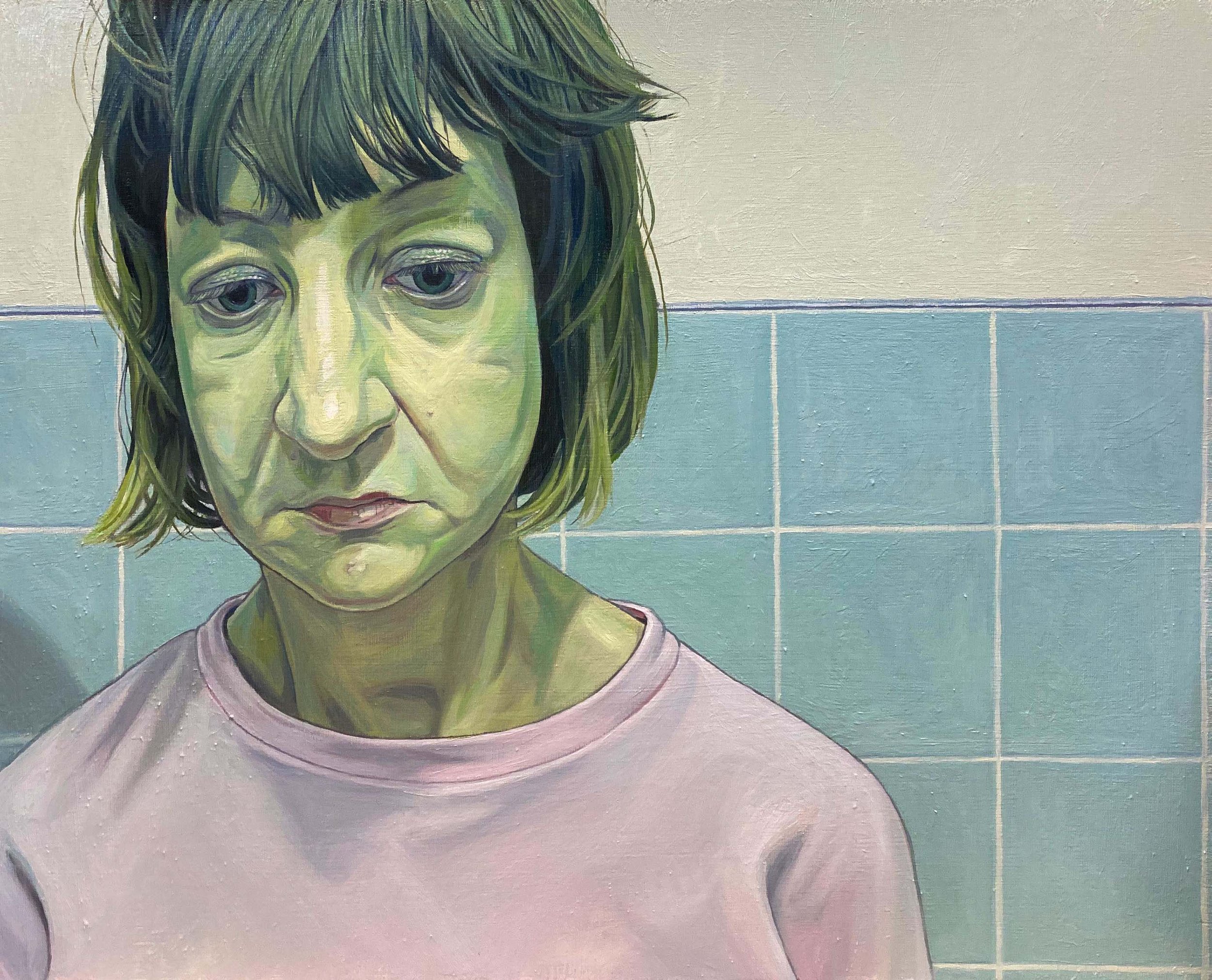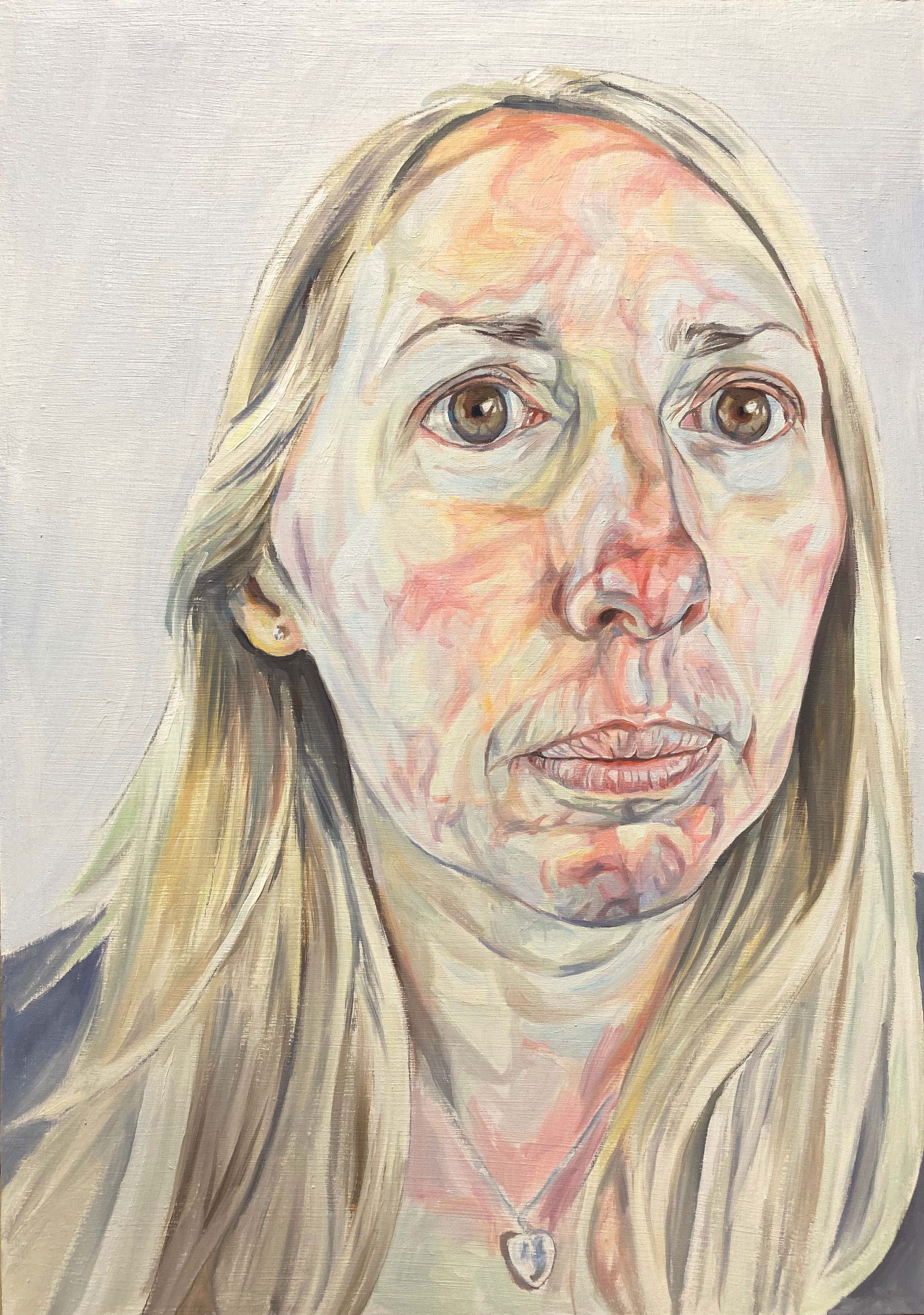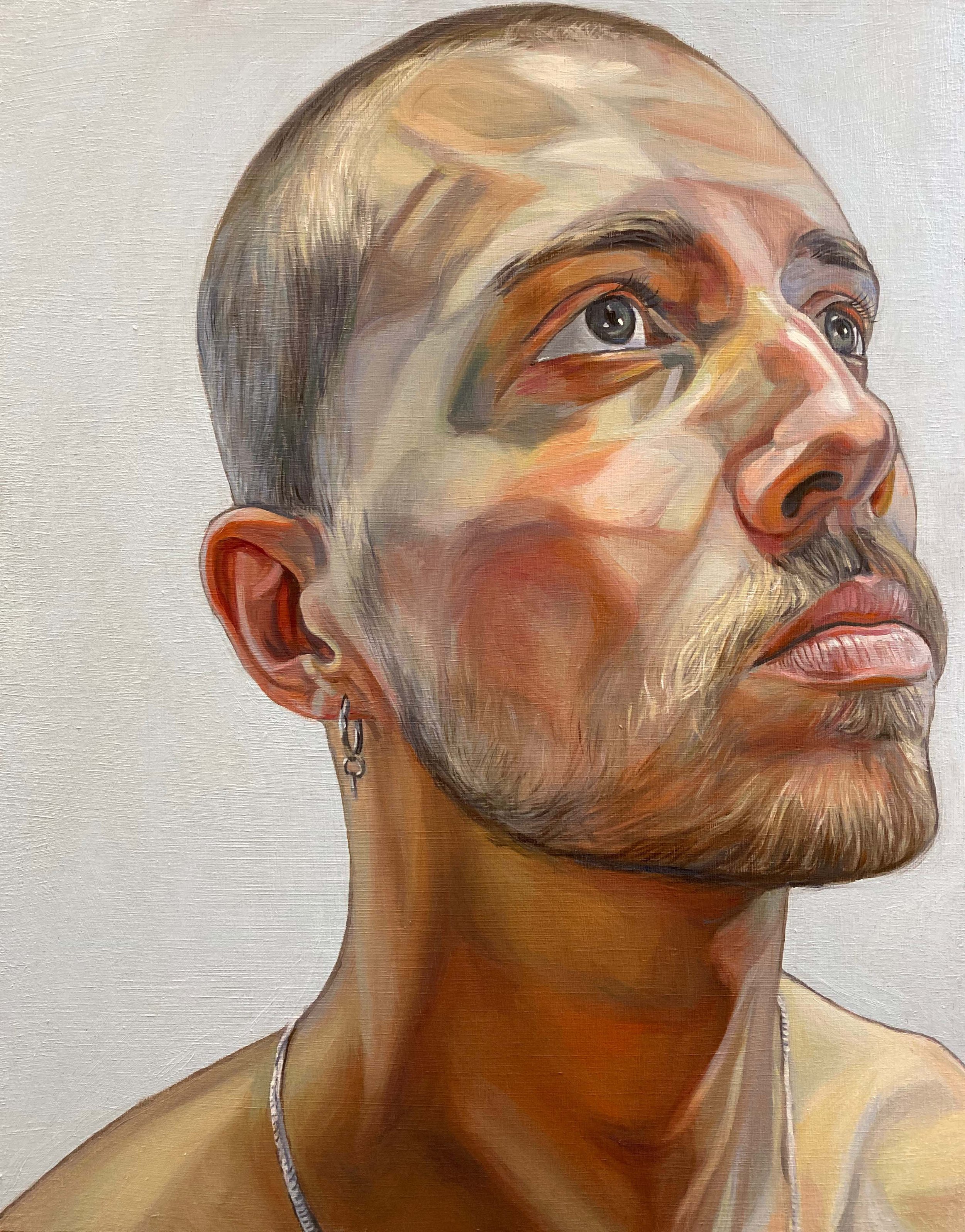ARTIST INTERVIEW: Peter James Field
Tell me about yourself and what inspired you to become an artist
I’m 46 years old and I live in Brighton. I wanted to be an artist since I was a little kid – loved drawing but was also particularly fascinated with looking at the work of other artists from past centuries. I think I was a bit of a weird child in that regard, as I wanted to spend all my pocket money on art books about people like Botticelli and Leonardo. It made me take drawing and painting very seriously, as for me it wasn’t just a distraction, there was a whole centuries long tradition.
How would you describe the style of your work? What motivates you to create it?
My work is figurative, and is mostly concerned with my fascination with other people and things. I once heard representational painting described as ‘nature seen through a temperament’, and I think that describes it well, because I don’t ever want to just depict things on a completely surface level, it’s filtered through the subjective world of my own experiences and emotions, and also seeks to offer some insight into the inner world of others. I don’t think that’s something one can do consciously, of course; you can’t sit down and say ‘today I am going to express xyz’. It’s more about being emotionally open, I think, and trusting that something will come out of the process.
Thinking about one of your most recent paintings, describe your process from start to finish. What was the piece about? How long did it take you to create?
I recently finished this small painting, which was painted in 2 layers across about six days (with 10 days drying time in between). Jake sat for me last autumn in the studio. We took loads of photos across a couple of hours. Throughout the year I am always approaching people to sit, or putting out calls for volunteer sitters – and I usually photograph way more people than I need. I would describe my process as fairly exploratory, in the sense I don’t go in with much of a plan. Working from photos is good because I can explore loads of options – different lights and poses. I try not to direct people too much, essentially I am an observer hoping they can reveal themselves to me, even if unconsciously. The next stage of my process is drawing. I produce quite a lot of sketches from the photos. Often my drawings are a bit inaccurate or ‘wrong’ (plenty end up in the bin) - but this is where my own expression starts to come in. When I’ve finally got a sketch which interests me, I start to paint. I usually work in oils on wooden panels. I’m quite a slow and ponderous painter, and this one came together quickly.
What fascinates you about portraiture? Is there any specific facial features that you particularly enjoy working on? Do you find any challenging?
People are fascinating but also unknowable. I’m quite a shy person, and have always thought of myself as a bit of an observer, endlessly curious about others. I think this is why faces will probably be the subject matter I love to explore the most. When it comes to drawing, I think the eyes are probably the most important part – hence the most difficult to get right. If I’m honest, I find hair a bit annoying to paint. My ideal sitter would be completely bald.
You are an illustrator as well as a painter, what do you enjoy about illustrating? What has been your favourite project to work on?
My route into art has been slow and tentative – at age 18, I thought I might be more suited to academia so I did an art history degree. Then, I went off and taught in Japan for a few years, saving enough money to come home and do a practical art degree. I chose an illustration pathway because figurative drawing was more or less frowned on by Fine Art tutors at college. Also I thought if I studied illustration, there might be a chance I could actually make some money! After graduating, I spent about 10 years being an editorial illustrator. I soon got something of a name for myself doing small pencil portraits. In 2011, I did about 30 pencil portraits for TIME Magazine’s prestigious ‘TIME 100’ special edition of influential people. This job certainly cracked me in America, and from then I had several years of being rushed off my feet doing illustrated portraits. Since about 2017, I’ve taken a step back from illustrating to finally specialise in painting, which is what I always wanted to do. I still take on illustration work but I try to be a bit selective. Working as an illustrator usually means collaborating with an art director or a whole team of clients who will brief you – so it’s not so much about personal expression. This can be nice and refreshing (we all love to just be told what to do sometimes), although sometimes it can be hard if the client has unreasonable expectations, or if you disagree with their feedback. In a way my experience as a portrait illustrator has very much informed my Fine Art portrait painting: illustration clients understandably want to be flattered. I get requests to remove wrinkles, eliminate double chins etc. It has made me absolutely fascinated by difference in my personal work, determined never to consciously flatter people. I think true beauty lies in celebrating everything, omitting nothing.
What is the best piece of advice you have been given as an artist?
A college tutor once said ‘Some people will say they love what you do. Some people will say they hate what you do. Believe neither.’ That really stuck with me. It’s my duty to not be crushed by criticism or rejection, nor to be overly seduced by praise and accolades if and when they come. Other people’s opinions are not my responsibility.
Who is your favourite artist? If they were sat next to you right now, what would you ask them? Do they have an influence on your work?
My favourite artist is probably Goya, the great Spanish artist who responded in such an amazing, empathetic and truthful way to his own devastating illness and to the civil war in his country. He was such a brilliant draughtsman and printmaker, and is probably the first true example of what we would now, in modern terms, call an Artist with a capital A. I don’t think I’d have anything to ask him though. Maybe he’d just let me be an unpaid intern in his studio for a week? I could make cups of tea and watch him work.
Describe your greatest achievements so far as an artist and also any challenges that you have faced.
I think my greatest achievement so far has been just to keep going... I’ve somehow been a full time artist and illustrator for almost 18 years, despite not coming from a particularly wealthy background or having much of a financial backup. The challenges come from within and without. Internally, I am everyday fighting the very loud imposter syndrome voice which tells me I’m useless, and urges me to give up. And of course we all live in a country which, year upon year, seems to value the arts less and less. 18 years into my career, people still expect me to work for tiny amounts of money or, more often than not, for free.
Why do you think art is important in society?
Without art, design and creativity, life would be unbearable. Everything from the buildings we inhabit, to the clothes we wear, to the entertainment we consume, has benefitted from the input of a creative mind, and usually started life as some kind of drawing. Is my art important in society? That’s a bit more difficult to answer. Probably not.














